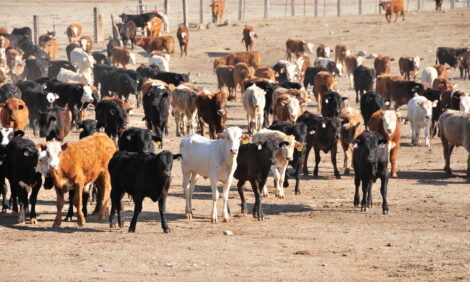



Sustainable Beef Answers Tough Questions
GLOBAL - A constantly evolving world poses big questions to beef producers trying to stay ahead of the game and ensuring keeping cattle is sustainable.New technologies, consumer demands and weather patterns all contribute to making beef sustainability a challenge, states a rancher’s daughter and beef ambassador.
In a recent article, Oklahoma student, Kalyn McKibben, outlined what sustainability means. read more
“The idea of sustainability is centered around the goal of making things better for the next generation; conserving natural resources, creating new, better management practices, preserving a culture, etcetera,” writes Kalyn.
Meanwhile, in Britain, a Scottish sustainable agriculture analyst has told farmers the do’s and don’ts of cattle movements.
His mantra is prevention is key and operations should work to “minimise risk”.
National Beef Association chairman, Charlie Maclaren has advised farmers that “getting rid of disease is far harder than prevention”, adding that costs are high if things go wrong. read more
He said 95 per cent of imported cattle are for the dairy herd, but the risk of cross-contamination is there.
“Bringing new stock into a herd, no matter how healthy, will always put pressure on the animals’ immune systems because there will always be new strains of a virus or diseases which will challenge,” he added.
“The same applies to the animals being introduced because they will be more susceptible to infection due to the stress of the move, new diet and environment.”
Reviewing a North of England case study, he said that one dairy producer tackled this issue by keeping cows in two separate sheds.
A rule of thumb for vaccination protocol is to quarantine animals for a 14-day minimum, with 60 days being optimum, he said.
A South Dakota feedlot expert is in agreement, pointing to research showing that calves exhibit a better immune response to vaccines if given time to rest and rehydrate. read more
Reid McDaniel at the state university says that US feedlots should allow an hour's rest for every hour travelled to maximise vaccination efficacy.
How a feedlot receives its cattle is essential both for animal welfare and, given the price of feeder cattle, economic sustainability, he said.
He pointed to research showing that any programme is better than no programme and that modified-live or killed version vaccines show positive results.
But he added: “Evidence for including bacterial pathogens such as Mannheimia, Histophilus or Mycoplasma in vaccine programs is not as solid. While bacterial pathogens are the most important causes of bovine respiratory disease, they typically occur following an infection with a virus.”
Michael Priestley
News Team - Editor
Mainly production and market stories on ruminants sector. Works closely with sustainability consultants at FAI Farms



